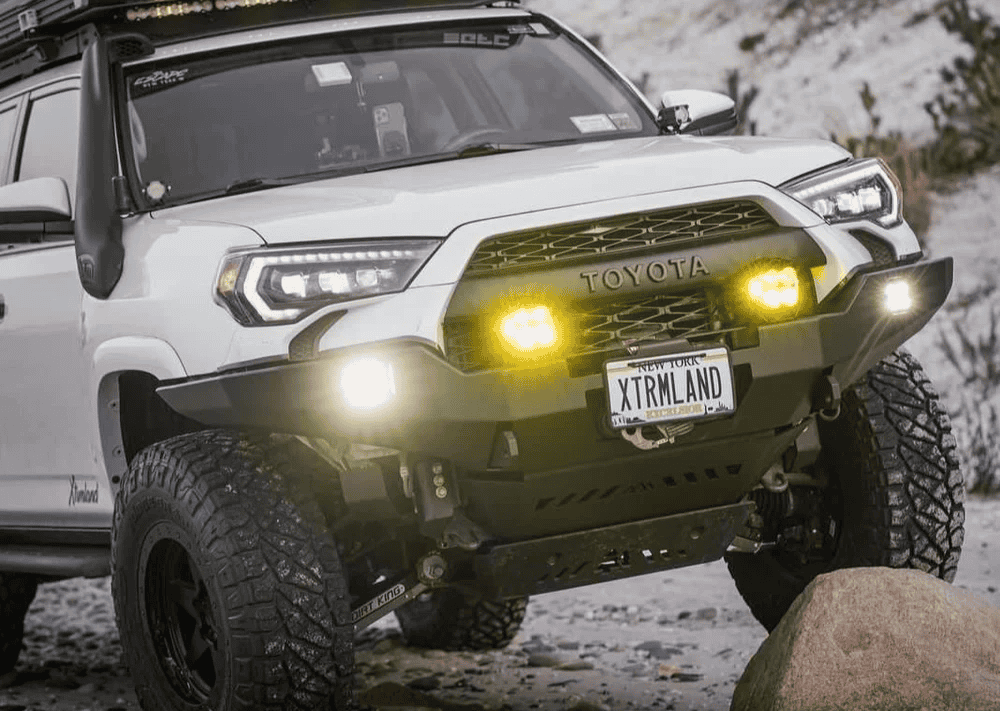Overland Vehicles

Ground clearance is not a single number. It is a system of angles and lowest points. Start by measuring approach, breakover, and departure angles. Identify the true low points under the vehicle such as differential housings, crossmembers, exhaust loops, and the fuel tank. Note where you actually make contact on your typical trails or worksites.
Record baseline dimensions on level ground with full fuel and your normal loadout. Check tire gap to fenders at full lock and over a speed bump to understand current travel. Photograph clearances at key points so you can compare after changes. This simple audit shows whether you need more belly height, better approach, or just a smarter tire choice.
Small gains at the tires can improve all three angles at once while suspension or body changes may target one zone more than others.
A modest step up in tire diameter is often the safest and most effective first move. Each extra inch of total diameter yields roughly half an inch of added clearance at the axle centerline. Keep an eye on:
Plan for minor trimming or heat forming of liners if needed, and confirm the spare fits the carrier. Recalibrate the speedometer if your platform supports it to keep traction control and shift logic happy.
There are three common paths to more height: tires, body lift, and suspension lift. Tires come first for most builds. Body lifts raise the body off the frame on body on frame platforms and can help with bumper and tire clearance without altering suspension geometry. They do not increase axle clearance but can improve approach and departure when combined with high clearance bumpers.
Suspension lifts increase the distance between the chassis and the axles, adding belly height and room for larger tires. The safest suspension solutions preserve bump stop placement, shock travel, and steering geometry while maintaining adequate down travel.
Leveling kits primarily raise the front to sit even with the rear. They can help fit a slightly taller tire, but excessive front preload can reduce down travel and lead to harsh top out. A complete suspension system with matched springs and dampers restores travel and control at the new ride height.
On independent front suspension, watch CV angles and tie rod geometry. On solid axle platforms, verify caster, track bar angles, and panhard to drag link relationships to avoid bump steer.
After installation, a professional alignment is essential. Target appropriate caster for straight line stability, correct camber if adjustable, and set toe to the manufacturer spec for the new height.
Clearance gains are only valuable if the rig remains predictable. Start with a careful shakedown on familiar roads. Listen for tire rub over compression and at full steering lock in a parking lot test. Re aim headlights to avoid glare. Check brake line tension at full droop on a lift or ramp.
Re torque all fasteners after the first few drives and again after the first long trip. Monitor driveline behavior at highway speeds and under acceleration from low speed. If you changed gearing or tire diameter significantly, plan for a regear to keep transmission shift points and engine temps in a healthy range.
Tire pressure matters. Larger tires often prefer slightly lower pressures for comfort and grip, but stay within load and speed requirements. Mark your new pressures for daily use and for heavy cargo days. Add skid plates or rock sliders to protect vulnerable points rather than chasing unnecessary height.
Strong builds keep center of gravity sensible. Distribute weight low and between the axles, and secure cargo so it does not shift during sudden maneuvers. With these checks, you will have real ground clearance that works everywhere, not just in the parking lot.
If you want that added height without guesswork, have a specialist validate geometry and parts selection. Our team designs suspension and tire packages that balance trail capability with calm on road manners, then verifies alignment, travel, and line routing before you take delivery. Explore our Overland rigs to see how we approach clearance as a complete system, not just a lift.
Planning a tailored upgrade around your driving style and terrain is what we do. See what a comprehensive package looks like with our Custom overland upfit options, and learn how we support you from the first conversation through handoff at Adventure Point in Fayetteville. New to our shop. Read more about our process here: Why choose OZK Customs.
At the end of your build, you will leave with a rig that climbs higher, tracks straight, and feels planted when it matters most.
Ready for real results without guesswork. Share your goals and driving style, and our team will design a safe, predictable lift plan that clears the terrain you face while preserving on road manners. Start your build conversation now.
ADDRESS:
6159 E Huntsville Rd, Fayetteville, AR 72701
PHONE:
(479) 326-9200
EMAIL:
info@ozkvans.com